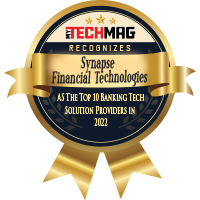In today’s digital era, technology is deriving changes in almost every industry, including the banking and financial segment. Smart utilization of the latest tools and technology is becoming an integral part of business success.
According to a recent study by PwC, over 81% of CEOs in the banking industry are considering the influence of digitization in the financial environment. But which technology trends will matter most for these professionals in 2020 and beyond? Is it blockchain and AI? The cloud and big data? Or digital-only banks?
The answer is challenging, as ignoring any of the latest technology will make it more difficult for financial executives to stay ahead of their competitors. So, watch closely on all the trends mentioned below as it has the most significant potential for the 4th industrial revolution.
Open Banking API
Open banking is one of the incredible aspects that has taken the financial organization by storm. Open Banking is capable of redefining the banking landscape by helping them improve financial service offerings and enhance customer engagement.
The trend of data sharing securely through open banking APIs with third parties has given greater control to the consumers to choose the way of interaction with their financial service providers. The largest tech giants – Apple, Facebook, Google, and Amazon (GAFA) have already implemented these open API platforms to ease their financial operations.
Cyber Security
Financial services executives are familiar with the effect of cyber-threats on their industry. As per PwC’s global CEO survey, 69% of banking CEOs are incredibly concerned about cyber-threats, compared to 61% of the chief executives across other sectors. Fortunately, it is likely to change for the better in the coming years, due to the increased implementation of secure applications, digital signatures, multi-factor authentication, and biometrics.
-
- Several custom banking software providers offer
- , including:
- Reduction of malicious activity through One-Time Passwords (OTP), MFA, SSH-based File Transfer Protocol (SFTP), and Single Sign-On (SSO).
- Secure socket layers (SSL) for all the standard TCP/IP connections.
Blockchain Integration
More and more banking organizations are using blockchain, moving it into the mainstream in 2020 and beyond, especially at larger firms. The blockchain is adopted extensively in payments, provenance, traceability, and remittances in today’s digital age. The focus of these implementations was majorly around process simplification and cost reduction.
This technology acts as a decentralized database, thereby safeguarding the user’s personal and financial information by storing them on multiple blockchain servers. That’s how blockchain integration helps you prevent fraudulence activities and cyber-attack.
Distributed Cloud Solution
The significant shift towards cloud-based computing is just getting started in the financial segment. According to the American Bankers Association (ASA) report, banking executives are generally receptive to a cloud-based solution, with 29% all-set to consider it.
At present, some banking industries employ cloud-based software-as-a-service (SaaS) applications to smoothen their business processes, such as financial accounting, CRM, and HR management. This technology will make 24/7 customer service possible by offering any time service to customers and thereby enhancing the performance and scaling up the services quickly.
Voice-Based Banking
As the number of people interacting with the voice device keeps increasing at a rapid scale, the financial brands are required to go beyond search engine optimization into the dominion of AI and natural language.
In simple terms, the organizations are expected to move from common account inquiries to using voice commands for financial transactions. This can include:
- Doing account transfers
- Executing payments
- Establishing account alerts and many more using voice commands
With the power of AI and voice commands, the businesses can integrate geo-location, transactional analysis, and current contextual learnings to offer a personalized solution to the banking customers. Experts believe that more than 50% of the financial transactions will be based out of voice devices in the next five years.
Conclusion
Looking at the tremendous impact of these trends on banking functionalities, it is essential to consider them as a necessary part of every initiative. More specifically, the latest technology will genuinely move the needle in this segment. The opportunities it offers are more significant than ever.







